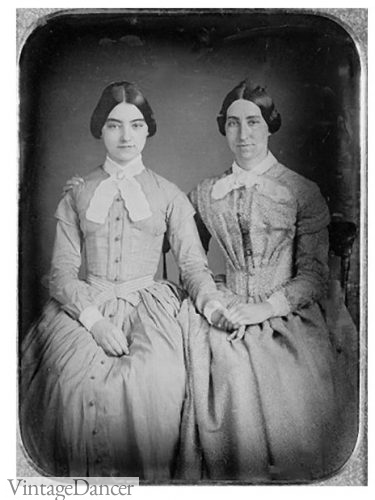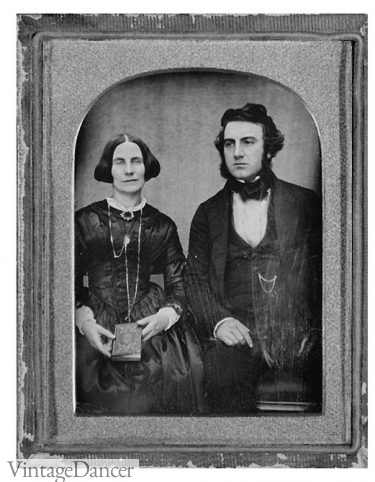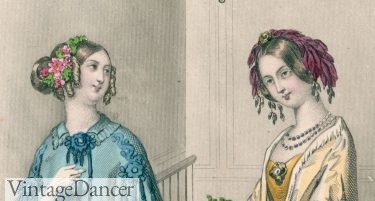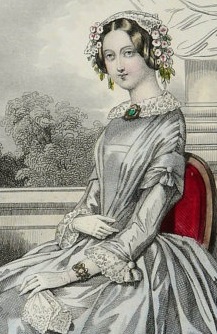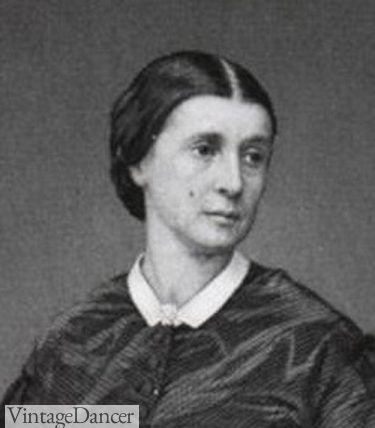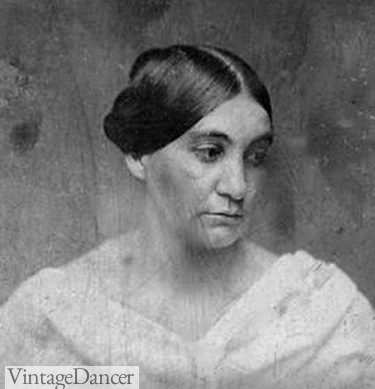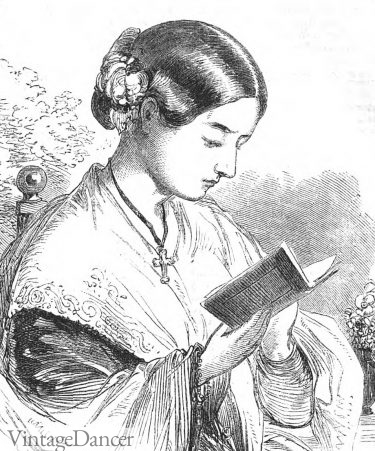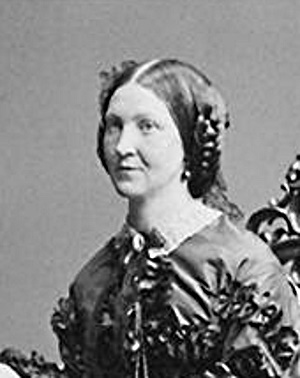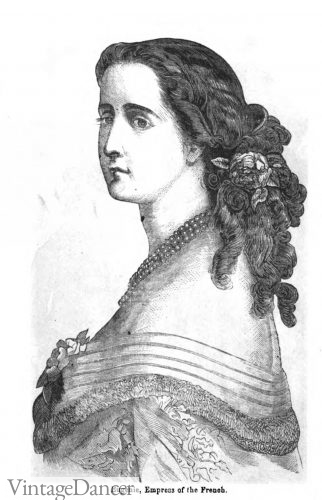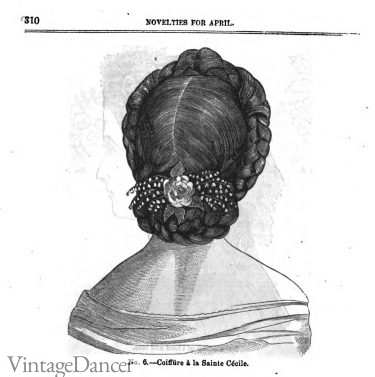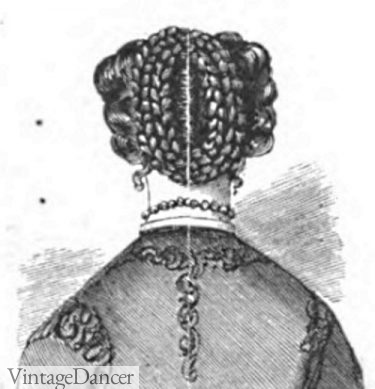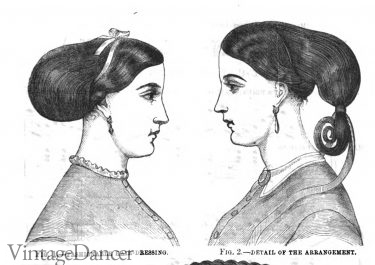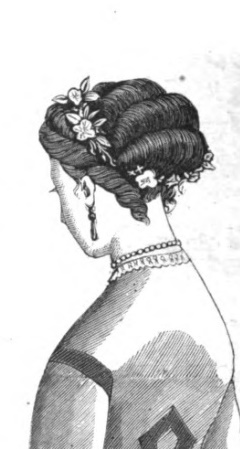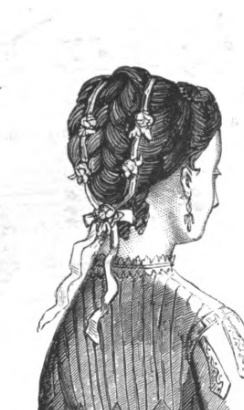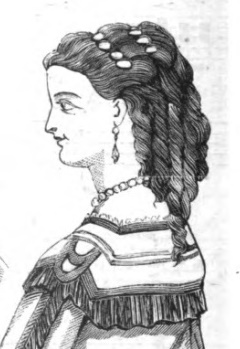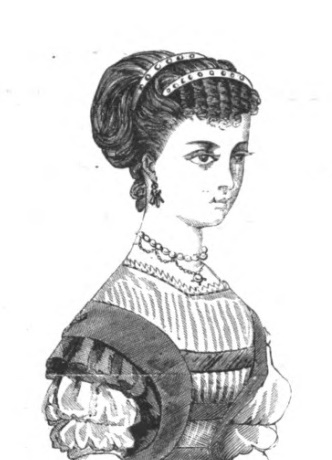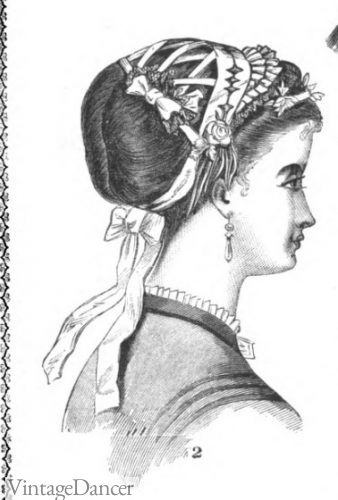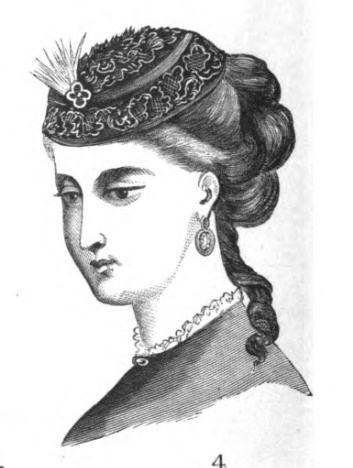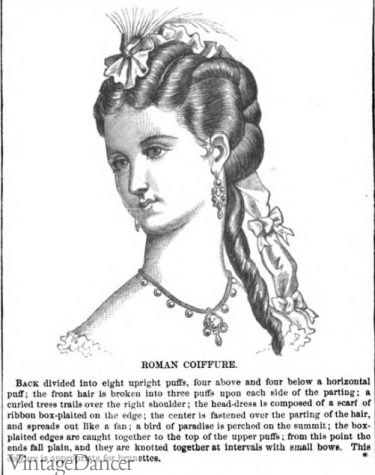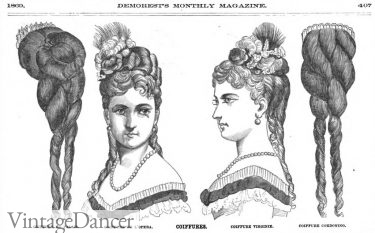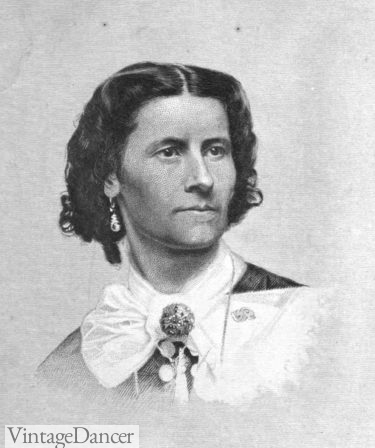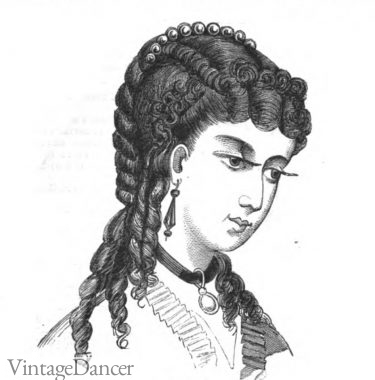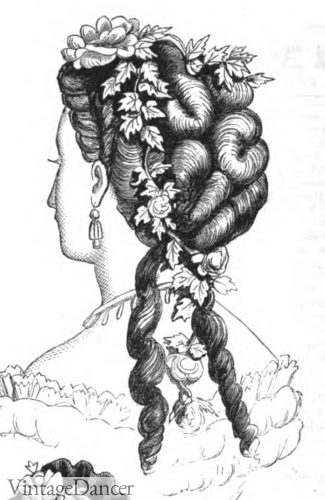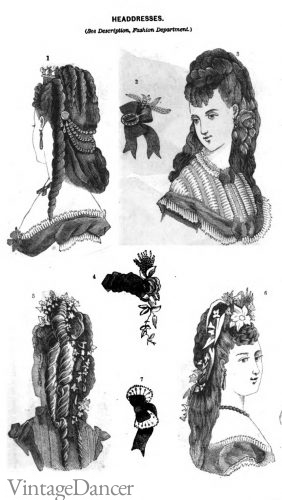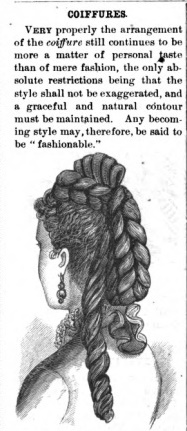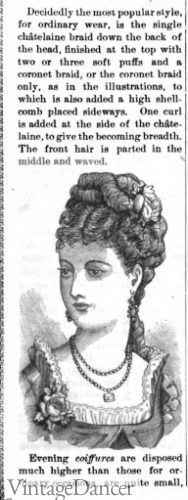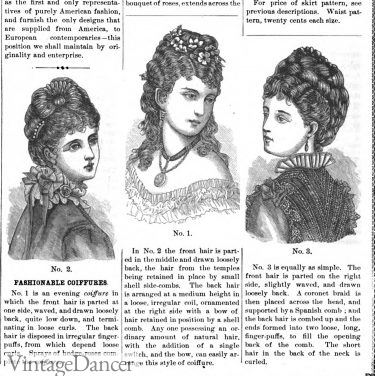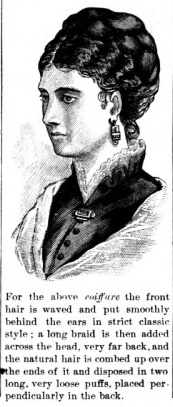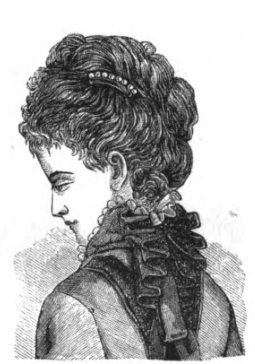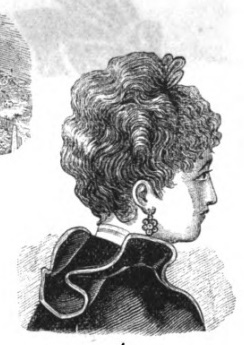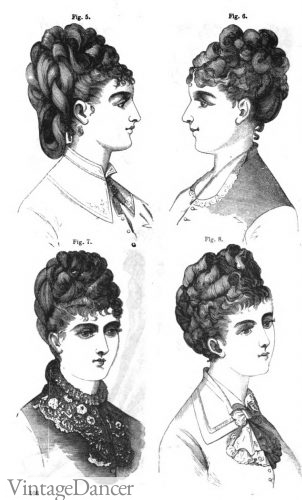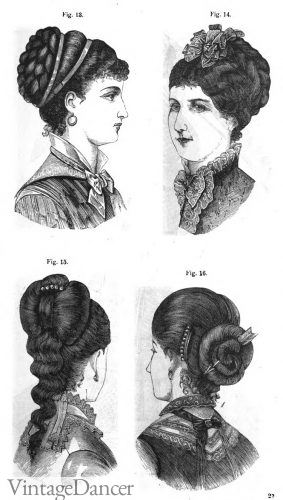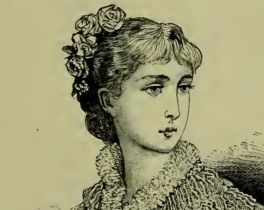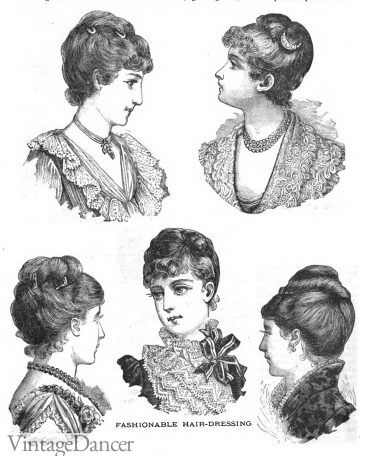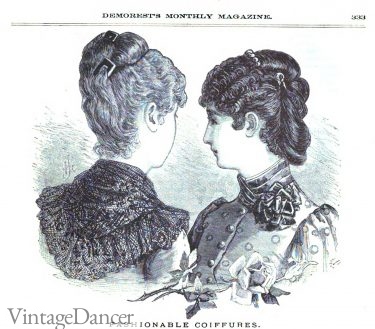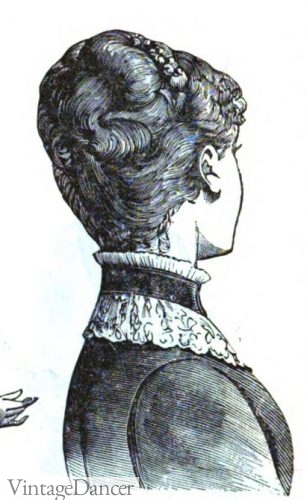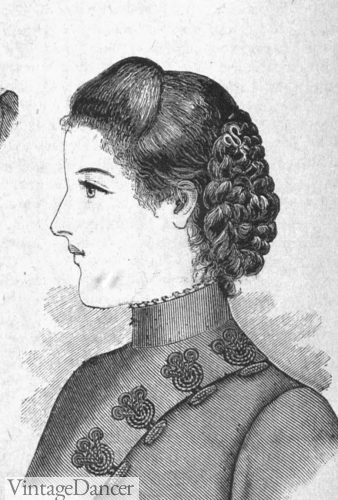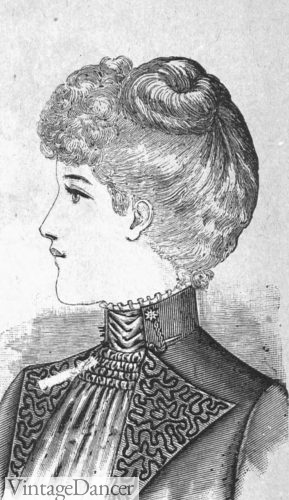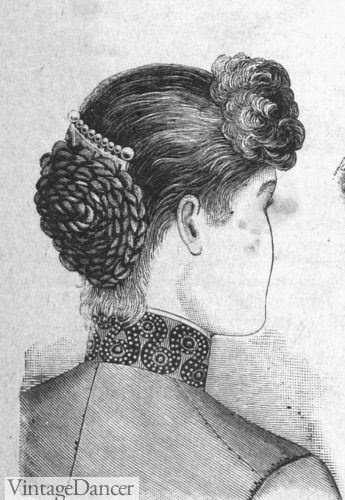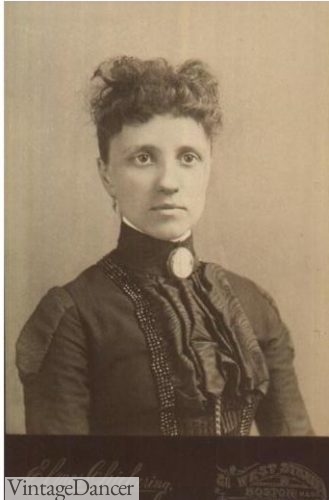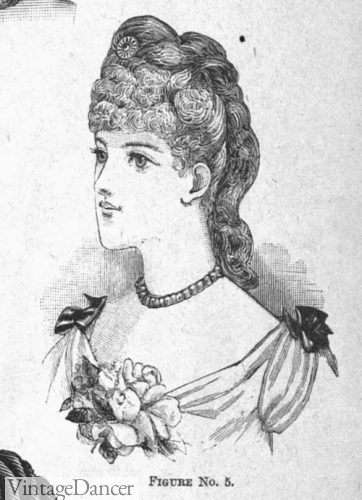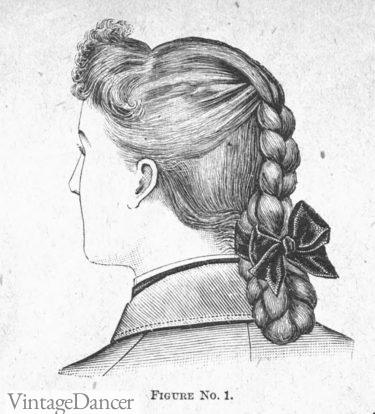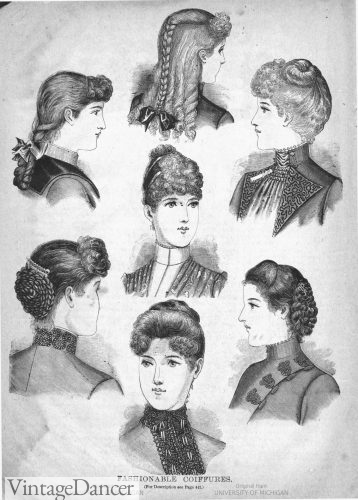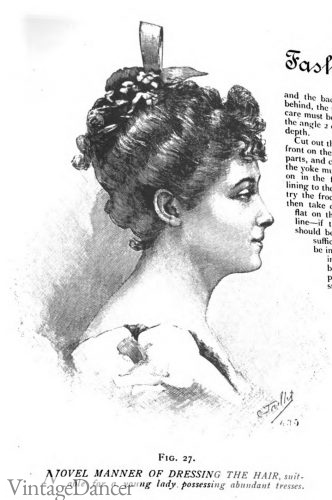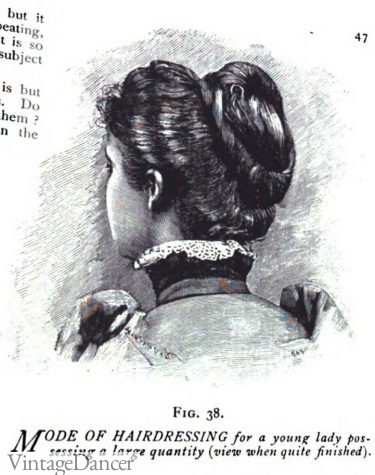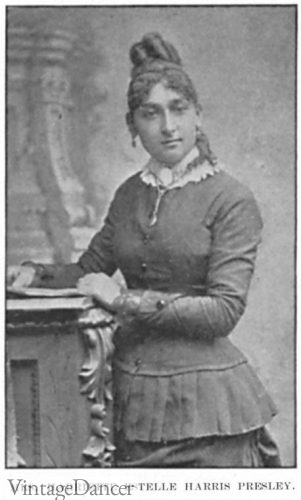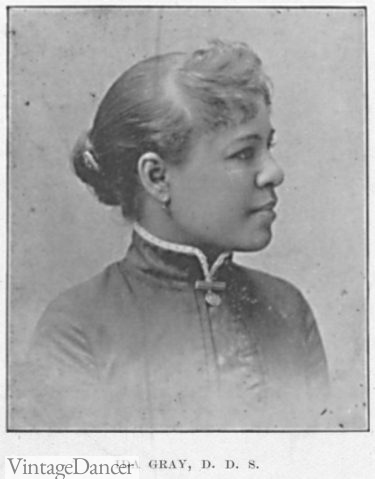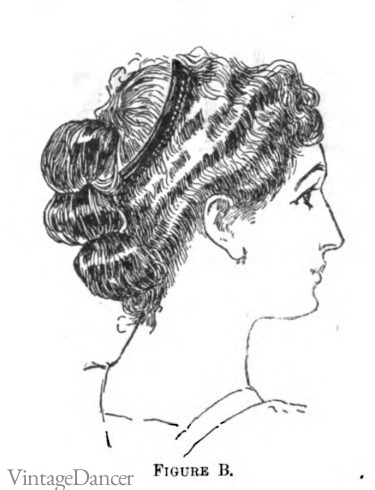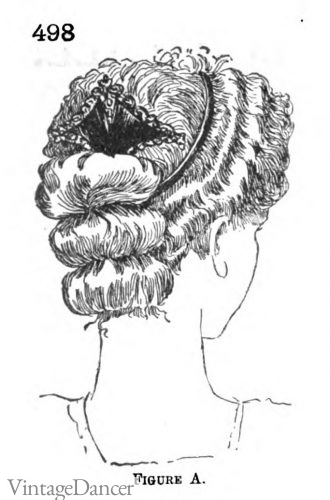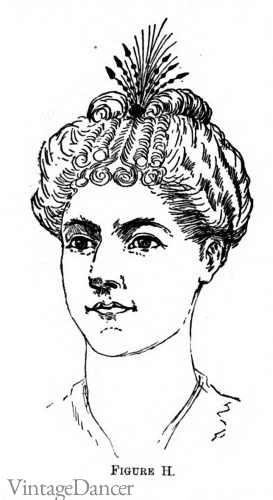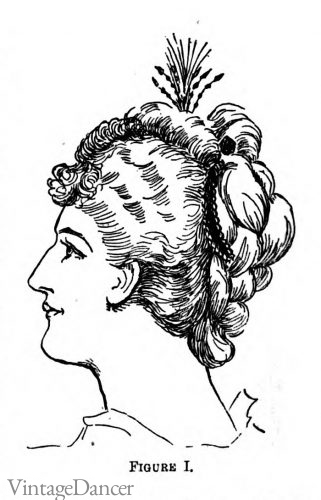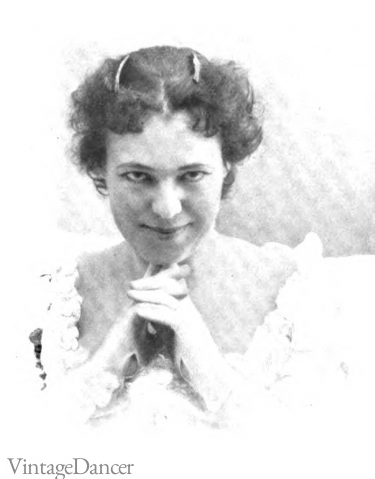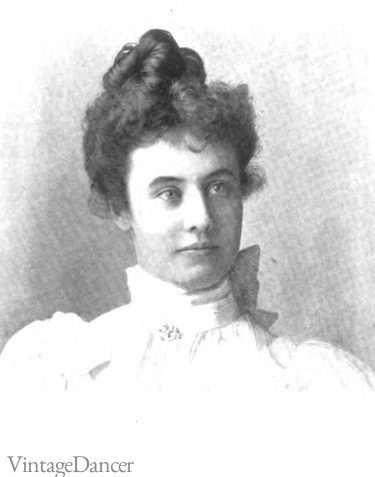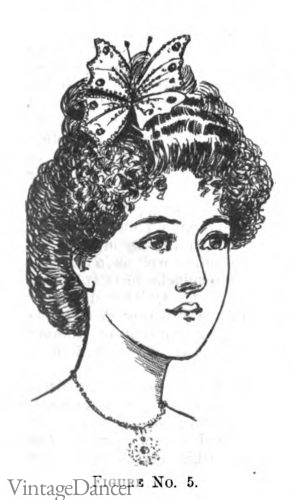Victorian hairstyles spanned the 1840s to 1890s. Each decade had a certain style for the wealthy classes involving hair parts, braids+, rolls, buns, and decorative accessories. Victorian hair after the 1850s was an elaborate arrangement of real and fake hair, requiring the assistance of a lady’s maid or female family member.
The following is a summery of each decade — key trends and hair accessories used with illustrations from popular ladies’ magazines.
1840s -1850s Hairstyles
Most hairstyles of the 1840s were simple and symmetrical. Long hair was parted in the center and looped over the ears and sides, pulled back into a bun at the center crown.
In the evenings, lace, flowers, and leaf crowns/headbands perched on the head with a flat top and lush sides. Ringlet curls could also be worn on the sides.
- 1840s- Center Parted Hair with High Bun at Back
- 1840s Center Part, Hair Looped Around Ears
- 1840s Hair Flowers
- 1848
1850s Hairstyles
In the 1850s and 1860s, Princess Eugenia inspired hairstyles as well as dress fashion. She wore her hair with a center part and ringlet curls dripping over one shoulder. Flowers were added to attend fancy balls or in the presence of a gentleman caller.
Variations over the decade included ringlets on both sides of the face for young girls, as well as the chignon bun and twisted knots placed at the nape of the neck for all women. Covering the entire ear wasn’t as trendy as it was in the 1840s, but a partial covering was the norm.
Corded silk snoods were a popular hair accessories for daywear, covering only the chignon / bun.
- 1854
1860s Hairstyles
The net covered chignon moved back up the head and was coiled loose and wide to make the hair look bigger. Tight backward rolls could add some framing near the face. More often than not however, hair was pulled back smooth.
Braids beginning above or below the ears and draped to the back resembled a short pageboy hairstyle from the front.
A hair net made of ribbon or crochet yarn enhanced with beads circled the head at the back or only over the loose chignon. An invisible hair net was also used to hold hair low on the neck in a horseshoe shape.
Side and back curls were worn for both day and evening looks. The hot curling iron was essential to every woman’s vanity. The iron crimped the hair into waves around the face as well as corkscrew curls that hung from the ears to the shoulders. As the decade moved closer to the 1870s, curls were brought up to the temples.
Engenin rolls were tight sausage shaped tubes that could be rolled from the crown to the back. Two long ringlet curls hanging from below the large bun were tossed over shoulders to the front.
Young girls and women could have a full head of ringlet curls hanging down to the shoulders, pinned back by a pretty comb.
- 1864 Empress Eugenie of France
- 1864 Braided Bun and Side Braids
- 1868 Braided Coils
- 1867 How to Loop with Ribbon
- 1868 Rolls Down Back and Sausage Curls on Sides
- 1868 Braids/Twists in Center
- 1868 High Loose Bun with Ringlet Curls Down
- 1868 Looped Updo with Headbands
- 1869 Derived Vertical Rolls/Twists
- 1869 Arranged for a Hat with Long Curl over Shoulder
- 1869 “Romain” Hairstyle – Multiple Rolls and a Long Curl for Evenings
- 1869 Evening Updos
1870s Hairstyles
Hair dressing in the 1870s became fancy with long curls, braids, plaits and twists cascading down the center back. The front was waved/frizz curled for a tousled look. Mature women wore their hair high on the back of the head, sometimes with a few ringlet curls draping down.
Long sausage curls continued to be popular, held back with combs, or freely hanging down the sides, as they had been. Women who pulled hair back tightly could have their long hair curled into a “tail” that reached the waist.
A tortoiseshell comb was often seen peeking over the top of the head.
A braided brown was another new style women loved. Hair was parted in the center and then two long braids came up to circle the entire crown, looking like a hair crown or hat.
A center part was still the most common, but a side part or un-parted smooth top was an option. Ears were completely visible. A few wispy bits of hair could frame the forehead.
Naturally curly haired ladies could simply leave half hair styled on top and the other half hanging down freely.
- 1870 Chin Length Ringlet Curls
- 1870 Tight Rolls Around Face and Down Crown Back
- 1870 All-Over Rolls and Two Curls
- 1872
- 1874 Plaited Center
- 1874 Piled Up Twisted Rolls
- 1874
- 1874
- 1875, Short Feathered Sides
- 1875 Feathered Sides, Possibly Short Hair on Top Too
- 1878 Updo Rolls
- 1879 Rolled Buns
1880s Hairstyles
Hair continued to be braided and shaped into buns in high heavy shapes. Large rolls were placed horizontally or vertically long.
- 1883
- 1884
- 1885
- 1885
- 1889
- 1889
- 1889 Braided Bun, Fluffy Bangs
- 1880s Curly Fluffy Bangs
- 1889 Evening
- 1889 Braided Loop in Center
- 1889
1890s Hairstyles
The hair of the 1890s piled up high on top of the crown, in tight coils and curls with fluffy bangs or fringe over the forehead. The top was flat to accommodate small decorative hats. At home hair was kept easy and low at the nape. For evenings, the piled hair was elaborately curled and placed even higher.
The Gibson girl pompadour replaced tight curls with loose round bouffants and a small bun at the center crown.
- 1892
- 1892
- 1893
- 1893
- 1896
- 1896
- 1896
- 1896
- 1898
- 1898
- 1898
Shop Victorian hair accessories, styling tools, books and wigs here!
More Hairstyles
- 1900s-1910s hairstyles – coming soon
- 1920s Hairstyles History- Long Hair to Bobbed Hair
- 1930s Hairstyles for Long Hair
- 1940s Hairstyles- History of Women’s Hairstyles
- 1950s Hairstyles, 50s Hairstyles from Short to Long
Debbie Sessions has been teaching fashion history and helping people dress for vintage themed events since 2009. She has turned a hobby into VintageDancer.com with hundreds of well researched articles and hand picked links to vintage inspired clothing online. She aims to make dressing accurately (or not) an affordable option for all. Oh, and she dances too.
